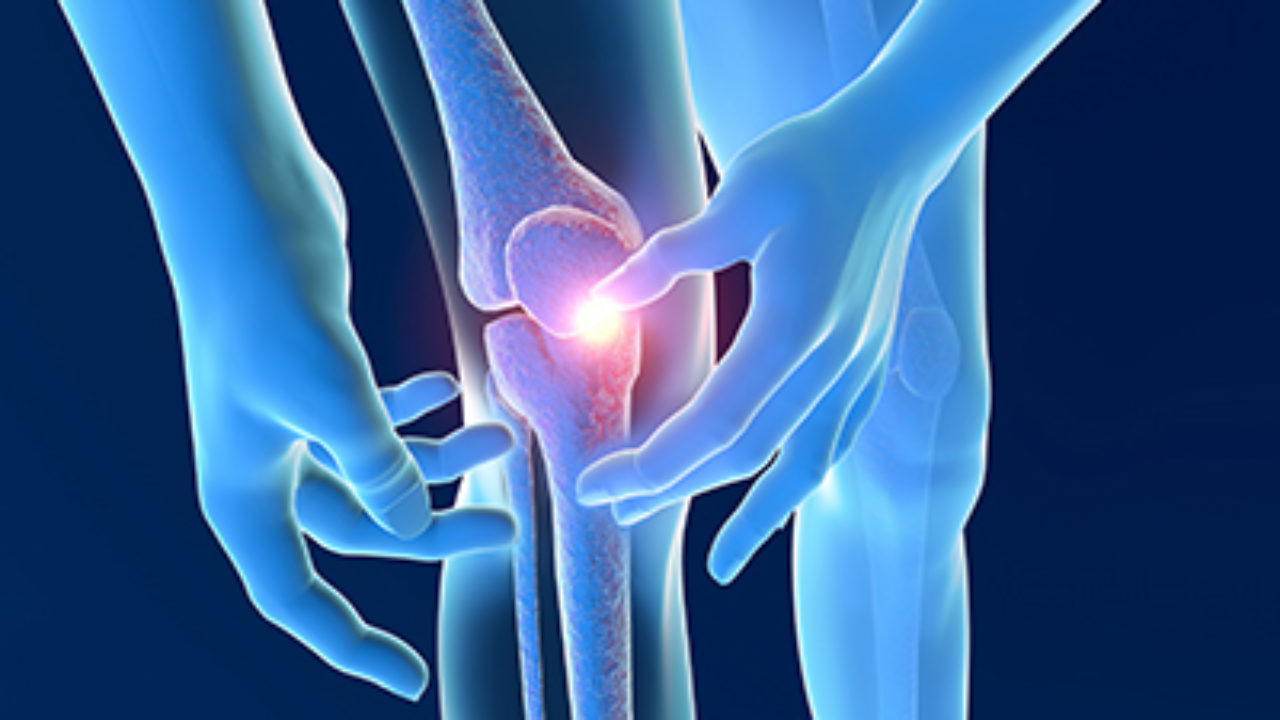- Home
- Knee locking And Loose Body
Knee locking And Loose Body
Knee locking And Loose Body
Loose body is the term applied to small fragments of articular cartilage that break off in the knee joint as a result of a knee injury or degeneration. Loose bodies float around within the knee joint and cause pain, catching, locking, or swelling depending upon where the fragments migrate. These fragments of bone and cartilage can come in all sizes and shapes, and can also occur as the result of long-term wear and tear to the knee. When a loose body becomes lodged within the knee joint, pain and instability will follow. This tends to recur until the loose pieces of cartilage are removed through surgery.

Symptoms and Diagnosis
Pain and a catching sensation within the knee are the primary symptoms of a loose body within the knee joint. Swelling usually follows. Some cases are associated with locking or buckling. Your physician will review the patient history and will ask about previous injuries and surgeries, and will also conduct a series of physical examination tests. An X-ray may show large, bony loose bodies, but an MRI is required to evaluate for loose cartilage without bone. Often, small loose bodies may be missed using MRI, and it is necessary to treat a patient with symptoms. The arthroscopic camera is the ultimate standard for confirming the location, size, and severity of loose bodies.Your physician will perform an arthroscopic knee surgery. Tiny incisions will be made and a camera will be used to visualize the inside of the knee joint. Then, your physician will begin to remove the loose fragments and smooth or perform restoration to the damaged cartilage (bone lining from where the loose bodies broke off or came free).
BOOK AN APPOINTMENT
“KNEEO Technique” For Knee Replacements
Causes of knee locking
1. Meniscus tear
Your knees have two pieces of cartilage, called meniscus, that act as shock absorbers where the knee hits your thigh bone and shin bone. They can become damaged or torn during forceful, twisting movements, or if your knee is hit, like during a tackle. The torn part of the meniscus can get stuck in the knee joint, causing it to lock up. Because the meniscus gets thinner and weaker with aging, older people may tear it during normal activity.
2. Ligament injury
There are two strong bands of tissue called ligaments that cross over the middle of your knee to keep it stable. One is the ACL (anterior cruciate ligament), which attaches the thigh bone to the shin bone. It can stretch or tear with a direct hit to the knee or with sudden stopping or pivoting. The PCL (posterior cruciate ligament) is behind the ACL and is much less commonly injured.
Two additional ligaments, the LCL (lateral collateral ligament) and MCL (medial collateral ligament) are on the sides of the knee. The LCL is more likely to be injured than the MCL, usually by a force to the inner side of the knee or overextension of the knee joint.
3. Arthritis
Arthritis is pain and inflammation in one or more of your joints. The CDC estimates that 23% of American adults have it. Any joint in your body can be affected by arthritis, but knee arthritis is very common. This is because the knee is a weight-bearing joint that is exposed to a lot of stress throughout your life.
There are several types of arthritis. Osteoarthritis, which is caused by wear and tear on a joint, is the most common form. Rheumatoid arthritis and psoriatic arthritis are autoimmune diseases that target the healthy tissues covering your joints.
4. Dislocated kneecap
The kneecap (patella) connects the muscles in the front of your thigh to your shinbone. If your kneecap slips out of its groove and becomes dislocated, it can cause your knee to lock. This injury usually happens during sports, when your knee is hit directly or you twist while your knee is bent.
5. Plica syndrome
Plica are thin folds found in the tissue lining your knee joint. They help your knee bend, but injury or overuse can lead to irritation and inflammation. This causes pain and a feeling that the knee is locking or buckling.
6. Loose bone fragment
Occasionally, a bone fragment in the knee can break off. This may be due to trauma, like a fall, but can also be from a cartilage injury or degenerative joint disease. In some situations, you may not even realize you have a loose bone fragment until it causes symptoms.
7. Patellar tracking disorder
Patellar tracking disorder is when the kneecap shifts out of place when you bend and straighten your leg. It happens when there’s a problem with the bones, tendons, muscles, ligaments, or cartilage that hold the kneecap in its normal position.
Over time, this abnormal movement produces symptoms. If you have patellar tracking disorder, you’re also at a higher risk for kneecap dislocation.


